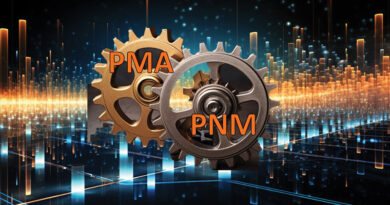The DOCSIS Virtual CMTSs — What You Should Know
By Brady Volpe
At this year’s SCTE Cable-Tec Expo I had the opportunity to present a topic on the “Top-5 Things You Should Know About Operating a Virtual CMTS.” While there are more than five things one should know about vCMTSs, the general overview is a virtual CMTS (vCMTS) is nearly identical in performance to a legacy CMTS but differs in some very interesting ways. This article provides a brief overview of the original presentation and hopefully will encourage readers to take a deeper look at the benefits of vCMTSs and aid them in becoming comfortable with the technology.
First, we should start with what is a vCMTS? A virtual CMTS or vCMTS is a software platform running on a server or multiple servers that is nearly identical in performance to what we have come to know and love as any other CMTS. For this discussion, I’ll refer to the common big chassis CMTS as a legacy CMTS, not just because I’m talking about virtual CMTSs, but also to differentiate them from MAC PHY cores and other new technology, which is outside the scope of this discussion. However, an overarching theme is that vCMTSs and legacy CMTSs have a lot in common, yet some things are different and are beneficial to cable operators.
One big difference is that a vCMTS runs on commodity, off the shelf servers. This can have many benefits such as serving different functions to the cable operator. Examples of these benefits are versatility, ease of upgrade from DOCSIS 3.1 to DOCSIS 4.0, redundancy, energy savings and the ability to be reproposed easily once the cable operator no longer needs the server for its original purchased purpose. This alone changes the dynamic between vCMTSs and legacy CMTSs. The server is just a server until a software platform is installed that turns the server into something. In this case we are turning the server into a DOCSIS CMTSs. The RF from the CMTS will exist at the edge of the HFC network as a remote PHY (R-PHY) node or R-PHY shelf.
The key five topics explored in the paper referenced in this article are:
- Deploying vCMTSs is very similar to deploying legacy CMTSs only it typically involves installing three servers and a switch rather than a larger chassis. One must keep in mind that vCMTS is deployed using distributed access architecture (DAA) technology
- Scaling vCMTSs is like legacy CMTSs, where legacy CMTSs involve more RF cards and chassis while vCMTSs involve more servers. Otherwise, it’s all service group configurations
- Troubleshooting vCMTSs and legacy CMTSs both utilize CLI and SNMP with similar limitations, however vCMTSs utilize streaming telemetry which provides significantly more troubleshooting data than is possible over CLI or SNMP – I see streaming telemetry as a vast improvement over SNMP
- vCMTSs really excel at multi-tasking if sufficient CPU and RAM are available on the servers. More applications can be installed allowing the servers to serve dual purposed services in addition to DOCSIS such as Speedtest.com, voice over Internet Protocol (VoIP) servers, passive optical networks (PON) terminators and other services simultaneously.
- vCMTSs can deliver up to 9x more throughput per watt than legacy CMTSs. Reduced power consumption and rack space savings are an obvious opportunity with vCMTSs. In our paper we compared a vCMTS against an integrated and distributed CMTS architecture. In all scenarios the vCMTS offered more service groups with less power consumption and less rack space usage. See the technical paper for the full details.
You can download the technical paper here:https://www.nctatechnicalpapers.com/Paper/2022/FTF22_WLINE06_Volpe%20_3755 or use this shortened link: https://bit.ly/vcmts2022
 Brady S. Volpe
Brady S. Volpe
brady.volpe@volpefirm.com
Brady Volpe is Founder of The Volpe Firm, Inc and Nimble This LLC. He has over 25 years of broadband cable and telecommunications industry experience specializing in RF, DOCSIS, PNM, and Internet Protocol. Mr. Volpe has been providing a wide range of troubleshooting, design solutions, services and seminars for cable operators and broadband companies specializing in DOCSIS, System Design, PNM, and Troubleshooting. He is a highly respected published speaker, both domestically and internationally. He also hosts a popular industry YouTube and Podcast – “Get Your Tech On“. Mr. Volpe has a MSEE with honors and a BSEE.
Shutterstock



